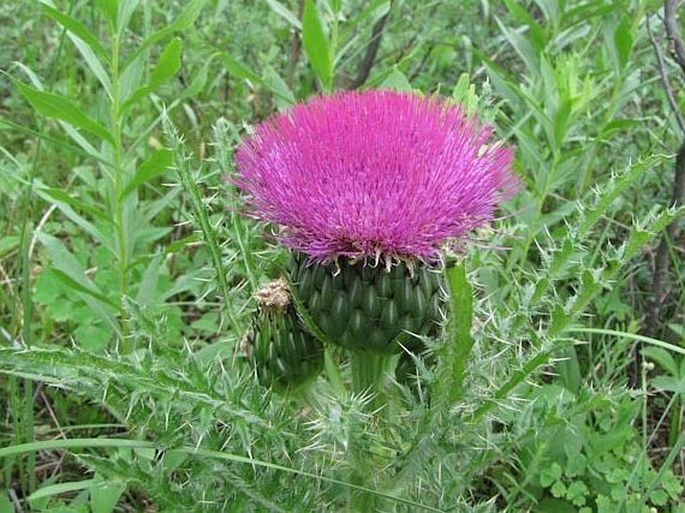Syn.: Carduus drummondii (Torr. et A. Gray) Coville, Cirsium coccinatum Osterh., Cnicus drummondii (Torr. et A. Gray) A. Gray
Family: Asteraceae Bercht. et J. Presl

Distribution: This is a North American species found especially in Canada, from Northwest Territories to British Columbia and through Alberta and the prairies to Ontario. In US, Colorado (very rare), South Dakota and Wyoming are the only states.
Ecology: Its found in dry to moist soil in prairie, meadows, forest margins, woodland clearings and roadsides, at elevations from 300 m to 2300 m. It blooms during summer from June to August.
Description: Biennial herb, acaulescent or shortly caulescent, 5–110 cm tall, from stout taproot. Stems are erect, stout, fleshy, leafy, simple or distally branched, with long septate trichomes; branches usually short and ascending. Leaf blades are oblong-elliptic or oblanceolate, 15–30+ × 3–7 cm, usually pinnatifid with lobes ovate to broadly triangular, spreading, spinose-dentate, main spines 2–5 mm, faces with septate trichomes. Flowerheads 1–5 but even 9, borne singly or crowded in corymbiform arrays at tips of main stems. Involucres hemisperic, 3.5–5 cm, loosely arachnoid. Corollas are purple, occasionally white, 30–48 mm, tubes 17–30 mm. Fruit is cypsela, light brown, 3.5–5 mm with a white pappus, 30–42 mm.
Notes: The roots of young, non-flowering (1st year) plants are eaten raw or baked in a fire pit. The Flathead tribe enjoyed them so much, they declared taboo to prevent people from picking too many.
Specific name is after Thomas Drummond, Scottish explorer, plant collector and naturalist.




These images were taken in Canada, Alberta, Weaselhead (August 2012).


